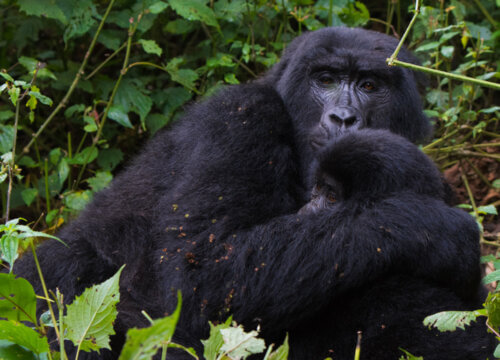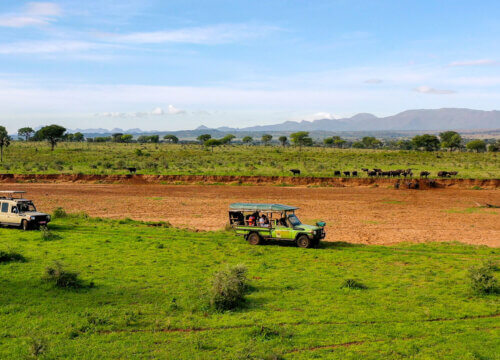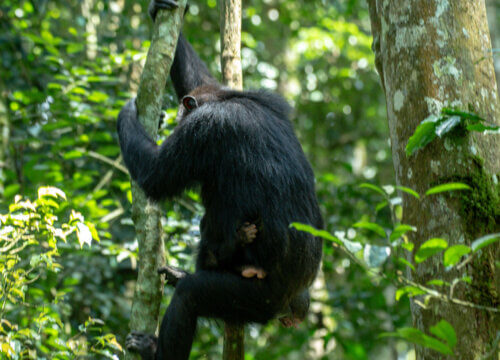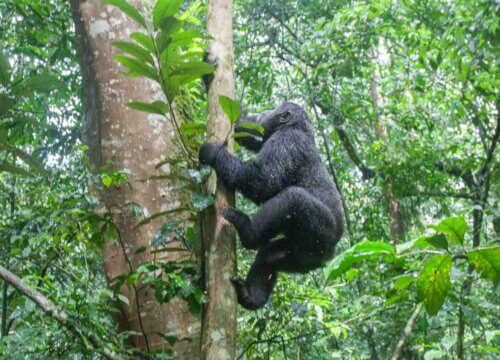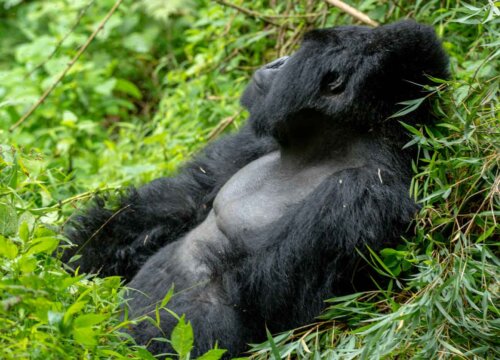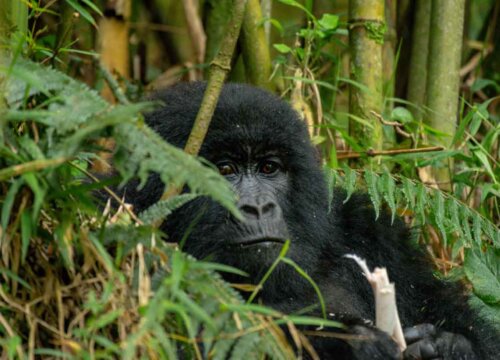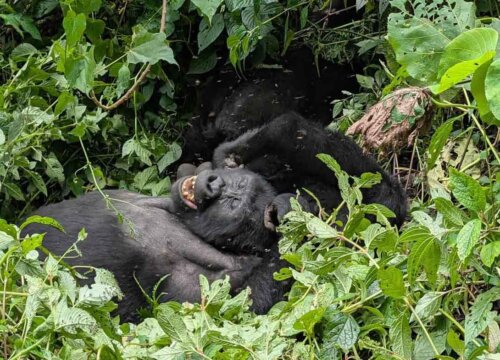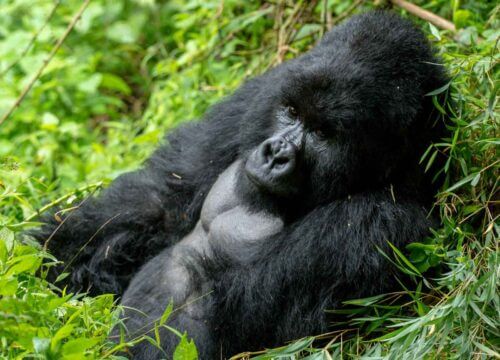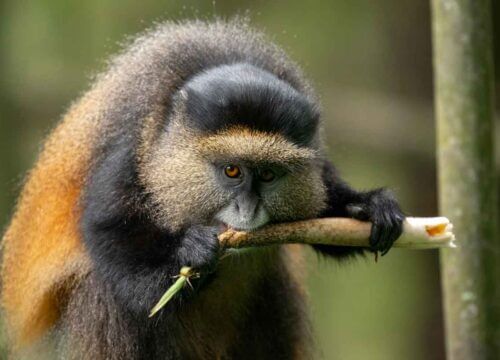How long do you stay with gorillas in Bwindi Impenetrable National Park
How long do you stay with gorillas in Bwindi Impenetrable National Park
Bwindi Impenetrable Forest National Park is home to approximately half of the world’s remaining mountain gorilla population. The park offers a rare and unforgettable chance to see these beautiful creatures in their natural environment.
Spending time with gorillas in the park is either during gorilla trekking or gorilla habituation. Gorilla trekking is limited to 1 hour as regulated by the Uganda Wildlife Authority to ensure minimal disturbance of gorilla environment and behavior.
When visitors start the journey, they are accompanied by experienced guides and trackers who are familiar with the gorilla habits and movements. The gorilla trekking safari experience can take 30 minutes to 6 hours which includes trekking, observing and returning depending on the location of the gorilla family being visited.
Once the gorillas are located, visitors are permitted to spend a maximum of one hour in their presence. This hour gives you the opportunity to see the gorillas as they play, eat and interact with each another. During this session, visitors are advised to maintaining a respectful distance of 7 metres.
On the other hand, gorilla habituation in Bwindi Impenetrable National Park involves closer under guidance human interaction with the gorillas. This activity takes 4 hours of trekking and waiting but rewards are worth. you can learn about gorilla conservation and behavior with in depth knowledge from tour guides. Gorilla habituation helps contribute to conservation efforts by helping gorillas become more tolerant to humans reducing risk and stress.
About Bwindi Impenetrable Forest National Park
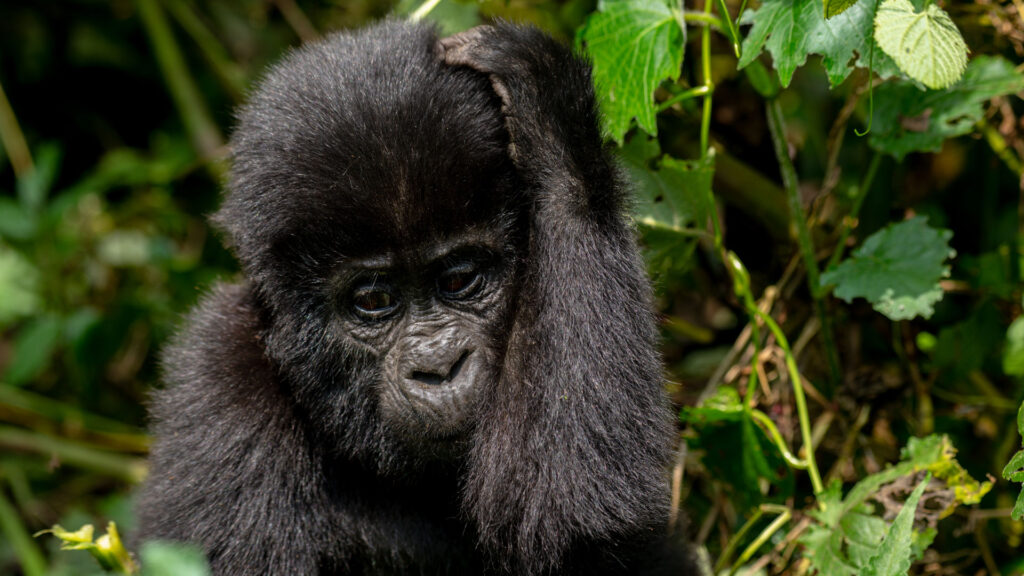
Bwindi Impenetrable Forest National Park
Bwindi Impenetrable Forest National Park is a famous UNESCO World Heritage site located in southwestern Uganda. It is shared by Kanungu, Kisoro and Rubanda districts. This tropical rainforest is home to almost half of the world’s population of endangered mountain gorillas, making it an ideal destination for tourists and wildlife lovers.
Established in 1991, Bwindi Impenetrable Forest National Park is not only famous for its population of more than 468 mountain gorillas but also for its unique biodiversity. The park is home to mammal species, primates like baboons, black and white colobus making it one of the most biologically diverse areas on earth. Visitors to the park can also see over 350 bird species like hornbills, turacos, sunbirds and others. Butterflies and tree species also beautify the park.
In addition to its rich biodiversity, Bwindi Impenetrable Forest National Park gives visitors the opportunity to engage themselves in the local culture. The park is surrounded by many local communities and guided cultural walks provide an insight into the traditional lifestyle, beliefs, and practices of the indigenous Batwa people. This cultural experience allows visitors to appreciate the close relationship between the forest and the local communities.
For adventure lovers, Bwindi Impenetrable Forest National Park offers a range of activities, including gorilla trekking, bird watching, nature walks, and hiking. The most popular activity is undoubtedly gorilla trekking, where visitors have a chance to see these magnificent creatures in their natural environment.
Bwindi Impenetrable Forest National Park collaborates with local communities to promote sustainable tourism and support conservation education and awareness. These efforts are important in ensuring the long-term survival of the mountain gorillas.
Areas favorable for Gorilla trekking in Bwindi Impenetrable National Park
Gorilla trekking safari in Bwindi Impenetrable National Park is done in four sectors that is Rushaga sector, Nkuringo sector, Buhoma and Ruhija sector as explained below;
Ruhija sector. This sector is located in the East of Bwindi Impenetrable National Park and it is known for gorilla families like Mukiza, Kyaguriro, Bitukura and others.
Rushaga sector. Located in the southern part of the park, its famous for families like Bweza, Busingye, Nshongi, Mishaya and Kahungye.
Nkuringo sector. It is located in the southern part of the park with gorilla families like Christmas, Nkuringo and others. This sector has long treks and a challenging ground.
Buhoma sector. With families like Mubare, Habinyanja and Rushegura, This sector is located north of the park with shorter treks and easier landscape.
Gorilla trekking experience in Bwindi Impenetrable Forest National Park
The gorilla trekking experience in Bwindi Impenetrable National Park starts early in the morning at the park headquarters with briefing about the rules and regulations of the park. Visitors are divided into small groups of 8 people. Each group is accompanied by a guide who is experienced in the behavior and environment of the mountain gorillas. The trekking experience can change in time depending on the location of the gorilla families within the park.
Guides look out for gorilla signs like foot prints, nests and droppings. After meeting a gorilla group, visitors are given an hour to see these gentle giants from a close but safe distance. Seeing the gorillas interact, eat and play gives visitors a rare sight.
After one hour, visitors travel through the forest back to their starting point and are rewarded gorilla trekking permits that show their participation.
Areas for gorilla habituation in Bwindi Impenetrable National Park
Bwindi Impenetrable Forest National Park is the only destination in Uganda for gorilla habituation. It is currently available in two sector that is Nkuringo sector with Nkuringo gorilla family and Rushaga sector with Bushaho and Bikingi families.
Gorilla habituation in Bwindi Impenetrable Forest National Park
In Bwindi Impenetrable Forest, the Gorilla Habituation activity is led by experienced guides and researchers who are dedicated to the conservation and protection of these magnificent animals. It starts with grouping of tourists in groups of 4 and leading them to the park.
Upon arrival, visitors are allowed to see gorillas from a distance but are not allowed to touch or feed them to avoid stressing gorillas. Researchers then identify a gorilla family for habituation while monitoring their behavior. People gradually increase their presence as gorillas get comfortable. They can move closer because gorillas are now tolerant with humans. Visitors then join the habituation process guided by tour guides and researchers. This activity takes four hours which provides more knowledge about gorilla habits and interactions.
It is advisable to book gorilla habituation permits atleast2 to 3 months in advance since they are on high demand and only 4 permits are available per day with groups of 4 people.
How much does gorilla trekking cost in Bwindi Impenetrable Forest National Park?
For foreign residents, gorilla trekking permits cost 700 USD per person,800 USD per person for foreign non-residents and 300,000 UGX per person for East African citizens and 1000 USD per person for the rest of Africa.
These permits are obtained from reputable tour companies or directly from Uganda Wildlife Authority.
On the other hand, gorilla habituation permits in Bwindi Impenetrable Forest National Park cost 1500 USD per person per trek for non-foreign residents,100 USD per person per trek for foreign residents,1000 USD per person per trek for the rest of Africa and 750000 USD per person per trek for East African citizens.
When is the best time to visit The Park?
The best time to visit the park for gorilla trekking and habituation is during the dry season that is from June to August and from December to February. During these periods, the weather is generally dry which makes it easier to cross the park’s landscape. Moreso, the dry season often provides better chances for gorilla trekking because gorillas usually stay at lower heights in search of food.
However, it’s important to note that the dry season is also the park’s peak tourist season. This means that accommodations may be harder to secure, and gorilla trekking permits may be at higher demand.
If you prefer cheap accommodation, quieter time and a more intimate experience while seeing the lush green vegetation, consider visiting during the wet season that is from March to May or from September to November. Remember that this season is unpredictable with heavy rains and muddy roads.
What to pack on a Bwindi Impenetrable National Park safari
During the trip, visitors are advised to carry light weight clothes, big hats, water proof jackets, gloves, hiking boots, comfortable shoes, sunscreen, lip balm, insect repellant, camera, first aid kit, binoculars, walking stick, torch, snacks, water bottle and many others.
Accommodation in Bwindi Impenetrable National Park
Bwindi Impenetrable Forest National Park provides many accommodation options for visitors ranging from luxury lodges to budget-friendly campsites.
For those looking for luxury, there are comfortable lodges that provide top-notch amenities and beautiful views of the surrounding forest. Travelers on a budget can choose more affordable options like guesthouses and campsites.
Lodges and campsites include Hill Forest lodge, Bweza gorilla lodge, Mahogany springs safari lodge, Clouds Mountain gorilla lodge, Buhoma community rest camp chameleon Hill Forest lodge, Rushaga gorilla havens lodge, Gorilla valley lodge and more.
How to access Bwindi Impenetrable National Park
Getting to the park is either by air or road transport.
Air transport
This is the easiest way to Bwindi Impenetrable Forest National Park which takes 1 to 1.5 hours. It starts with a flight from Entebbe International Airport or kajansi airfield to Kisoro airstrip to reach Nkuringo and Rushaga sectors then kihihi for Ruhija Buhoma sectors.
On a Uganda safari, you can choose to stay in Mgahinga Gorilla National Park which is home to one of the habituated group, The Nyakagezi group. It is about 10km from Bwindi Impenetrable Forest National Park.
Road transport
The park is 540 km from Kampala capital city and the trip takes 8 to 10 hours. This depends on the area you will be trekking from.
Northern sectors of Buhoma and Ruhija can be reached by turning off along Kabale-Kisoro Road where you will see a Uganda Wildlife Authority post which you follow up to the sector you are going to trek.
Southern sectors of Nkuringo and Rushaga can be accessed using a road turnoff at Muko along Kabale-Kisoro highway that takes you to those sectors.
Explorer More Safaris
- 3 Day Bwindi Gorilla Trekking Safari
- 4 Day Uganda Gorilla Trekking and Wildlife Safari
- 4 Days Gorilla Trekking and Adventure Safari
- 5 Days Uganda Gorillas and Chimpanzee Tracking Safari
- 4-Day Rwanda Gorilla Trekking and Golden Monkey Tracking Safari
- 5 Day Gorilla Habituation and Chimp Trekking
- 6 Days Gorillas and Chimpanzee Trekking Safari
- 4-Day Uganda & Rwanda Gorilla Trekking Tour
- 3 Days Bwindi Gorilla Trekking Ugnada from Rwanda
- 10 days best of uganda primates & wildlife safari
- 10 Days Uganda Primates and Game Safari

